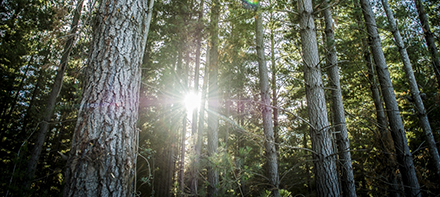The newly established Gippsland Forestry Hub’s aim to drive the industry’s future is handicapped by the State Government’s policy to close Victoria’s native forest industry by 2030, the group’s initial strategy shows. Source: Philip Hopkins for Timberbiz
This policy, plus the impact of bushfires, will have a big impact on future wood supply, says the Gippsland Forestry Hub 30 Year Strategy. “The proposed plantation expansion cannot bridge the supply gap,” says the report, prepared by consultants Greenwood Strategy for the Hub and released last week at a well-attended gathering in Morwell.
However, “the phase out of native forest harvesting creates a resource void and opportunity”, said Greenway’s managing director, Pat Groenhout, in his presentation.
The Gippsland Hub, one of 11 nationwide, is part of the Commonwealth Government’s plan to plant a billion trees over the next decade in recognised forestry regions.
Gippsland, which stretches 450 kilometres east of Melbourne to the NSW border, comprises 41,500 km2 of land. Production forestry occupies 14,300km2 (34%), with 90,000 hectares of plantations (23% of Victoria’s total plantations) – the region’s single largest land use.
Public native forests managed mainly for conservation make up about 28% (11,700km2). About 232,000ha of native forest are privately owned.
Mr Groenhout said regional log production was fully committed. Plantation expansion was limited by land suitability, land availability, competition for land from agriculture, plantation economics and social licence issues.
“There are constraints to expanding the integration of tree crops on farms”, he said, and a perception that State Government policy and local government regulation impeded forestry expansion on private land.
In contrast, opportunities included: the potential to capitalise on Commonwealth and State Government farm forestry policy support; environmental services markets that could improve plantation economics: engagement with traditional owners; and capitalising on underused processing plants.
“Getting water treatment right can open up the (Commonwealth’s) Emissions Reduction Fund,” he said. While the Gippsland forestry market was shallow and economically immature – there were few buyers – Melbourne was on target to become Australia’s largest city and thus the biggest market for forest products.
“Access to Port of Melbourne provides an opportunity for greater export market access,” he said.
Mr Groenhout said despite the uncertainty of new resource types, capital could be invested in alternative processing and products. There was potential for smaller scale processing and industrial hubs, with processing and new technologies matched to plantation age classes in future.
He acknowledged integrating trees with agriculture had a poor track record in Gippsland, but workable commercial arrangements with smaller growers were possible. Catchment management authorities could develop environmental services in water.
Mr Groenhout said new plantations may be in new locations creating pressure on roads and infrastructure, driving new infrastructure investment and a possible enhanced role for rail.
Community support could be gained by capitalising on the biodiversity advantages of plantations and emphasising the timber industry as clean, sustainable and carbon positive.
The resource issue raised the danger of losing skilled labour, including firefighters, but it was recognised that “the industry in Gippsland has had good success with its skills and training programs”, he said.
Mr Groenhout emphasised that the Hub was a facilitator and was excluded from an advocacy role. However, “there is a gap in contemporary, high-quality, well-founded and science-based research and information about the industry”, he said. “It’s positive role in Gippsland … can be addressed by the Hub within its remit.”
Mr Groenhout said many stakeholders believed that the State Government’s decision to stop native forest harvesting on public forests from 2030 and transition to fibre from 2024 was based on inadequate information and imperfect and un-objective advice.
“The Hub must play a key role in identifying knowledge gaps and providing accurate and reliable information, assessment and analysis to inform decision-makers,” he said.
The Hub now aims to work with industry and stakeholders to develop a comprehensive 30-year strategy for forestry in Gippsland. Engagement with Gippsland traditional owners in economic and industry development is an integral part of the process.
Further information: www.gippslandforestryhub.com.au






